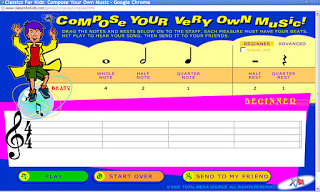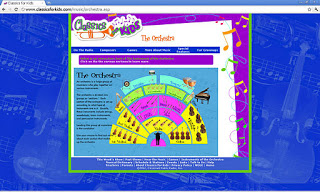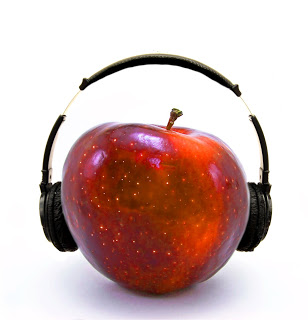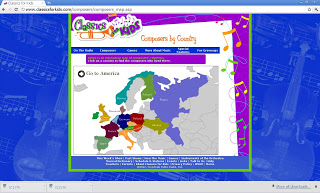Classics for kids is a GREAT website that includes podcasts that are only about 6.5 minutes long. My favorite part about the podcasts is that they do several episodes about each composer, so by the time your students have listened to each of them, they have received a huge amount of biographical and musical information in bite sized portions. Did I mention that the podcasts are FREE?!!!
The only catch is that they don’t keep ALL of the podcasts up on the website, so my advice would be to subscribe to the podcast through itunes and then collect the episodes so that you don’t miss any. My collection of episodes on itunes is MUCH more substantial than the episodes online.
.PDF information/worksheets are available for each composer featured in the podcast. Each sheet is slightly different, but all of them contain biographical information and have some sort of listening map and activity that can be worked on while students are listening. You can download all of those PDF files without ever listening to a podcast, so they serve as good reference material whether you choose to use any other resource or not.

My students were kept pretty busy this afternoon with four fairly intuitive online games. There is a music composition game, a note naming game, a rhythm game and a “time travel” composer game.
There are even audio clips about various musical careers. They are great because you can choose to listen to the entire thing, or just listen to segments based on interest. I’ve found that resources for musical careers is rather difficult to come by, and this is a good source of information.
There is an interactive composer timeline and map that link you back to episodes of the podcast and biographical information. I think sometimes it’s hard for students to get a sense of time and place, so I especially like the way that visually overlapped the lives of the composers. You can tell at a glance who which composers were alive at the same time and when you compare the geography you might get a sense of who was influencing whom in terms of musical style. Very cool!

The music dictionary is nice as well as the information about instruments of the orchestra.
Most of the audio clips require Real Player to be installed, so you might want to make sure that is taken care of before trying this website with students.
I’ve found this to be a rather dynamic website with a vast array of resources ready for you and your students to explore. There are many layers to this site that I didn’t cover in this blog post, so please go and explore….I bet you’ll find things that I don’t even know about yet. 🙂
Enjoy!



